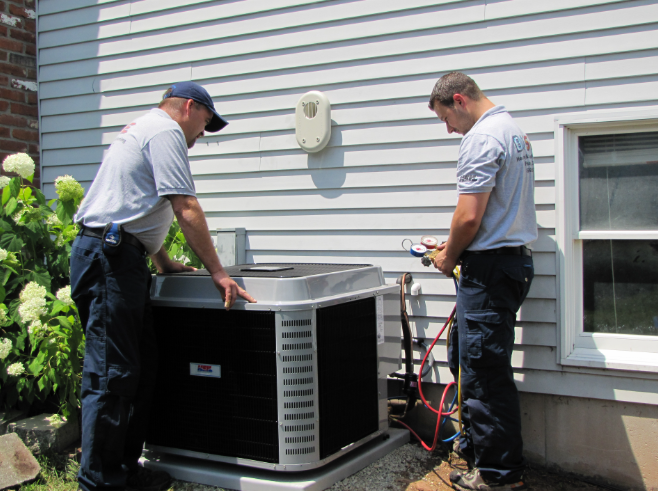As winter temperatures drop, a malfunctioning furnace can quickly turn a home into an uncomfortable environment. Before dialing for same day furnace repair, homeowners can take several proactive steps to ensure safety, possibly identify minor issues themselves, and provide accurate information to the technician. Knowing what to check before professional help arrives can save time, reduce repair costs, and make the service more efficient.
1. Ensure Safety First
Safety is the top priority when dealing with any furnace problem. Furnaces operate with gas, electricity, or both, and improper handling can pose serious risks.
Turn Off the Furnace: Before inspecting anything, switch off the furnace at the thermostat and the circuit breaker. This reduces the risk of electrical shock or accidental activation.
Check for Gas Leaks: If your furnace is gas-powered and you smell gas, evacuate the house immediately and contact your local gas company or emergency services. Do not attempt to locate the leak yourself.
Ventilation Awareness: Ensure that vents and flues are not blocked, which can cause dangerous carbon monoxide buildup. Installing a carbon monoxide detector near the furnace is a proactive measure that can save lives.
2. Gather Basic Information
Having clear information about the furnace and its issues can help the emergency technician diagnose and resolve the problem faster.
Know the Model and Age: Record the make, model, and age of your furnace. Older furnaces may have discontinued parts, affecting repair options.
Note Recent Performance Issues: Keep track of unusual sounds, odors, or inconsistent heating patterns. Describing these symptoms accurately to the technician allows them to come prepared.
Review Maintenance History: If you have records of previous inspections or repairs, keep them handy. Regular maintenance can highlight recurring problems and help the technician understand the furnace’s history.
3. Conduct a Simple Visual Inspection
A preliminary visual check can reveal issues that are easy to fix without professional intervention.
Check the Thermostat: Ensure the thermostat is set to “heat” and at the desired temperature. Replace batteries if needed.
Inspect Air Filters: Dirty or clogged filters reduce airflow and efficiency. Replacing them may restore function without requiring a technician.
Look for Obvious Blockages: Check vents, registers, and the area around the furnace for any debris, dust buildup, or obstructions that could impede airflow.
4. Listen and Observe
Furnaces often provide clues to their problems through sound, smell, or visible indicators.
Unusual Sounds: Clicking, banging, or hissing noises can indicate electrical issues, loose components, or gas problems.
Odors: A burning smell may suggest overheating or dust on heating elements, while a rotten egg smell could indicate a gas leak.
Pilot Light or Indicator Lights: If your furnace has a pilot light or digital indicators, note their status. A malfunctioning pilot light is a common and sometimes simple fix.
5. Try Basic Troubleshooting
Some minor furnace problems can be resolved by homeowners without risking safety.
Reset the Furnace: Many modern furnaces have a reset button. Consult the owner’s manual for instructions and try resetting the system.
Check Circuit Breakers and Fuses: A tripped breaker or blown fuse can prevent the furnace from turning on. Reset or replace as needed.
Ensure Adequate Power Supply: Make sure the furnace is properly plugged in and that outlets are functional.
6. Avoid DIY Repairs for Complex Issues
While small checks are safe, attempting to repair gas lines, electrical components, or internal furnace parts can be dangerous.
Do Not Tamper with Gas Lines: Gas leaks require professional handling. Any interference can lead to explosions or serious health hazards.
Avoid Internal Repairs: Modern furnaces have sensitive electrical and mechanical parts. Tampering without proper knowledge can worsen the problem and increase repair costs.
7. Prepare Your Home for the Technician
Once you’ve completed preliminary checks, prepare the space to make the technician’s work more efficient.
Clear the Area Around the Furnace: Remove furniture, storage items, or obstacles to provide easy access.
Document Observations: Write down all the symptoms, times when issues occur, and any troubleshooting steps you’ve already attempted. This helps the technician start with a clear picture.
Ensure Access to Thermostats and Vents: The technician may need to inspect airflow and test various system settings.
8. Understand the Importance of Timely Service
Delaying professional service can lead to increased energy bills, further damage, and potential safety risks. Calling a technician promptly ensures the issue is addressed before it escalates. Scheduling same day furnace repair guarantees that your home remains warm and safe during critical cold periods.
Conclusion
A furnace breakdown during winter is stressful, but taking simple steps before calling an emergency technician can make a significant difference. By prioritizing safety, gathering information, performing basic checks, and preparing your home, you help ensure an efficient and effective repair. While some minor issues may be manageable, always remember that professional expertise is essential for complex problems. Timely action, combined with careful preparation, keeps your home comfortable and your family safe.
 :
https://www.malikheatingcooling.com/heating/
:
https://www.malikheatingcooling.com/heating/












